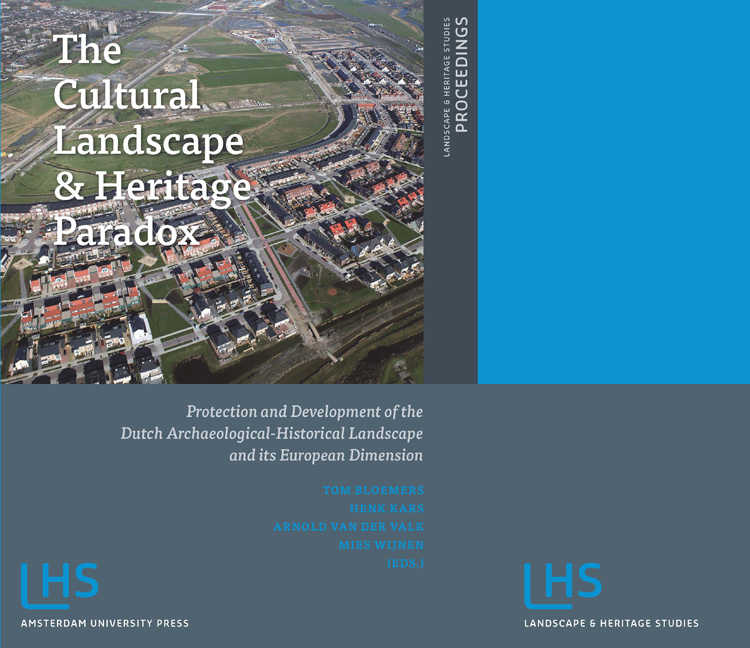 The Cultural Landscape and Heritage Paradox
The Cultural Landscape and Heritage Paradox Book contents
- Frontmatter
- Contents
- Preface
- I INTRODUCTION
- II INSIGHTS AND PROSPECTS OF ARCHAEOLOGICAL-HISTORICAL LANDSCAPE STUDIES
- III LINKING KNOWLEDGE AND ACTION
- IV IMAGINATION - FACTS AND CONSTRUCTIONS
- V SHARING KNOWLEDGE - STORIES, MAPS AND DESIGN
- VI SYNTHESIS AND CONCLUSIONS
- VII MANAGEMENT OF KNOWLEDGE
- VIII AGENDA FOR THE FUTURE
- IX SUMMARY
- X APPENDIX
- Subject Index
- Index of Places and Regions
1 - Introduction to ‘Protecting and Developing the Dutch Archaeological-Historical Landscape’ (PDL/BBO)
Published online by Cambridge University Press: 21 January 2021
- Frontmatter
- Contents
- Preface
- I INTRODUCTION
- II INSIGHTS AND PROSPECTS OF ARCHAEOLOGICAL-HISTORICAL LANDSCAPE STUDIES
- III LINKING KNOWLEDGE AND ACTION
- IV IMAGINATION - FACTS AND CONSTRUCTIONS
- V SHARING KNOWLEDGE - STORIES, MAPS AND DESIGN
- VI SYNTHESIS AND CONCLUSIONS
- VII MANAGEMENT OF KNOWLEDGE
- VIII AGENDA FOR THE FUTURE
- IX SUMMARY
- X APPENDIX
- Subject Index
- Index of Places and Regions
Summary
As chairman of the steering committee of the programme ‘Protecting and Developing the Dutch Archaeological- Historical Landscape’ I am honoured to introduce the publication that marks the end of the programme. Or perhaps I should say its transition to a new state, because the 2008 symposium and this volume, which is intended to position our national discussions in the context of their European background, may now be continued in a network provided by the European Science Foundation and COST.
This would be a very useful development because obviously the issues we discussed during the 2008 symposium are not national at all, or at best there are some particularly Dutch aspects to the problems and challenges that affect archaeological heritage management everywhere. The latter may well be the case because the Netherlands is one of the most densely populated countries in the world in addition to being economically strongly developed. That means that the pressure on the use of space that is evident in the entire western world, and is indeed becoming evident in the central areas of the new economic powers elsewhere, is particularly strong here. While elsewhere there are still vast open spaces or at least there is some room to negotiate, the space that is available in the Netherlands to accommodate the historical and archaeological values in competition with other needs of society is extremely limited in comparison.
Fortunately, this does not imply that the cause of preserving and enhancing the remains of our past that create our identity and that are so important in many other ways is a hopeless one. It may be somewhat more difficult than elsewhere, but on the other hand our Dutch history, thanks to the need for resilient systems of water management, has provided us with both rather tough legislation developed over several centuries and a planning system that create a strong backbone for public policies. These, of course, have first to be developed and put in place and, to cut a very long story short, our symposium here can be seen as a step in that ongoing process of becoming aware of the inadequacy of an existing policy, defining a better one, ideally through research, and putting it in place.
- Type
- Chapter
- Information
- The Cultural Landscape and Heritage ParadoxProtection and Development of the Dutch Archaeological-Historical Landscape and its European Dimension, pp. 19 - 20Publisher: Amsterdam University PressPrint publication year: 2010
- 1
- Cited by


